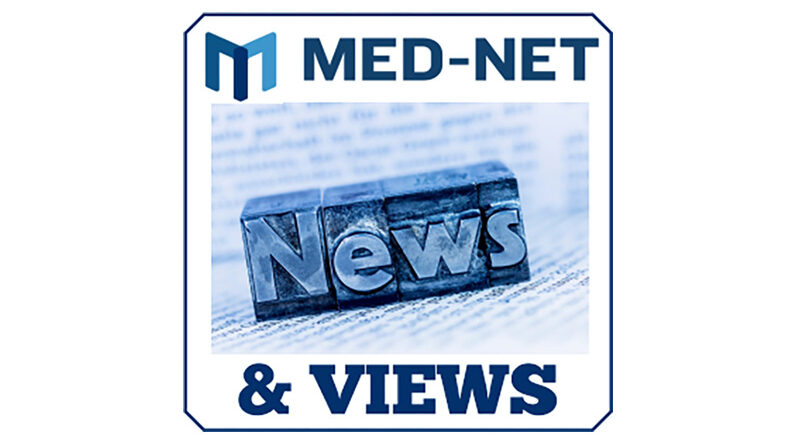Benefits of Implementing an Effective Risk Management Program
By:
David S. Barmak, JD
Med-Net Healthcare Consulting, LLC, provided a formal risk management program for a 100+ bed skilled nursing facility in New Jersey. The risk management program covered clinical, operational, and legal risk exposures.
Med-Net conducted the following clinical and operational risk management services for the facility:
- Quarterly clinical and billing audits, including review of medical records to ensure documentation matched the services actually provided, and review of billing claim forms to ensure that the billing was supported by appropriate documentation. Facility policies and procedures were reviewed and enhanced as findings indicated. Quality of care, compliance with state and federal regulations, and clinical standards of practice were the primary focal points for the quarterly audits. The quarterly review generated a dynamic work plan that specifically detailed the findings and recommendations for remedy and/or improvement.
- Review of the facility’s incident reports for the quarter.
- Quarterly Risk Management Committee meetings that coincided with the facility’s quarterly Quality Assurance Committee meetings.
- Training for appropriate staff on documentation and coding (nursing, therapy, and billing).
- Quarterly audits and training for department heads and staff in the following areas:
- Quality Assurance/Fraud, Waste, and Abuse
- HIPAA Privacy and Data Security
- Employment (discrimination, harassment)
- Disaster Recovery Planning
- Miscellaneous additional regulatory issues
Enter an Insurer
An insurance company was asked to review the professional and general liability insurance policies of the facility with an eye toward reflecting the existing risk management program on the insurance premiums. To everyone’s pleasure, the risk management program substantially reduced a number of risks that everyone agreed were of most interest to the underwriting insurance carrier that had been brought in for a competitive bid.
By working with a proactive insurance company that understood the nursing home industry, the team was able to find important gaps in the existing insurance coverage. Those gaps were subsequently erased when the facility switched to the insurance company for comprehensive coverage.
The first problem addressed was a lack of coverage for residents and staff who traveled in the facility’s van. The van had regular state required insurance, but the liability umbrella covering the facility did not extend to trips with residents outside of the facility. Another area of weakness was within the wind coverage of the policy. If the facility were to sustain a loss based on a hurricane, there would have been a deduction of 1% of the applicable limit, or $25,000, whichever was greater. The new coverage’s wind deductible was a flat $15,000, with no additional deductibles. The business interruption insurance limit was raised by over four times in the new policy, which should have enabled the facility to endure and survive any major catastrophe.
There were other areas of weakness due to the fact that the insurance policy had been in place for over five years, and that the company writing it, although a great insurance company, no longer wrote new coverage for nursing homes. As a result, certain areas of coverage now included in new insurance policies were not available in the old policies. For example, the way the policy covered medical equipment and home care if needed.
Other significant cost savings originated in suggestions made during the first visit:
- A minor change in the type of fire extinguishers used in the kitchen resulted in a substantial savings of insurance premium.
- An infrared scan of the building’s electric system verified a problem-free system, and a five-year certificate yielded savings over the five-year period.
A Pleasant Conclusion
The final result of implementing the risk management program was a 30% reduction in annual insurance premiums, coupled with a substantial increase in coverage while making the facility safer for all clients and employees.
The key message from all of this is an important reminder: overall insurance premiums are based on risk! If a facility can reduce the risk it poses to an insurance company, the facility may receive a reduced premium. However, the facility must be able to communicate effective risk management strategies to the insurance company in a meaningful way while providing proof that such strategies will be maintained over time. All facility managers and ancillary employees need to recognize that they have an essential role in managing risk for the facility and themselves.
If you would like more information on implementing a risk management program that may lower your professional liability premium, please call Marshall Goldberg, Sc.D., LNHA, President of Med-Net Healthcare Consulting, LLC. at (609) 454-5020.
What You May Not Know About Med-Net Healthcare Consulting
Our Comprehensive Services Include:
- Behavioral Healthcare Review Program
- Census Development
- Informal Dispute Resolution (IDR)
- Medical Record Request Review
- Mock Survey
- Focused Mock Survey
- Modified Mock Survey
- Plans of Correction
- Rapid Response Program
- Rehabilitation Management Program
Med-Net Podcasts
Check out our latest podcast series, hosted by healthcare attorney and CEO of Med-Net Concepts, David S. Barmak, BA, JD. This series offers listeners another platform for discussing a variety of topics in the healthcare industry and supports our mission to give long-term care and post-acute healthcare providers the power to stay informed while maximizing rewards and minimizing risks.
Our podcasts will launch each month on our Spotify channel HERE.


